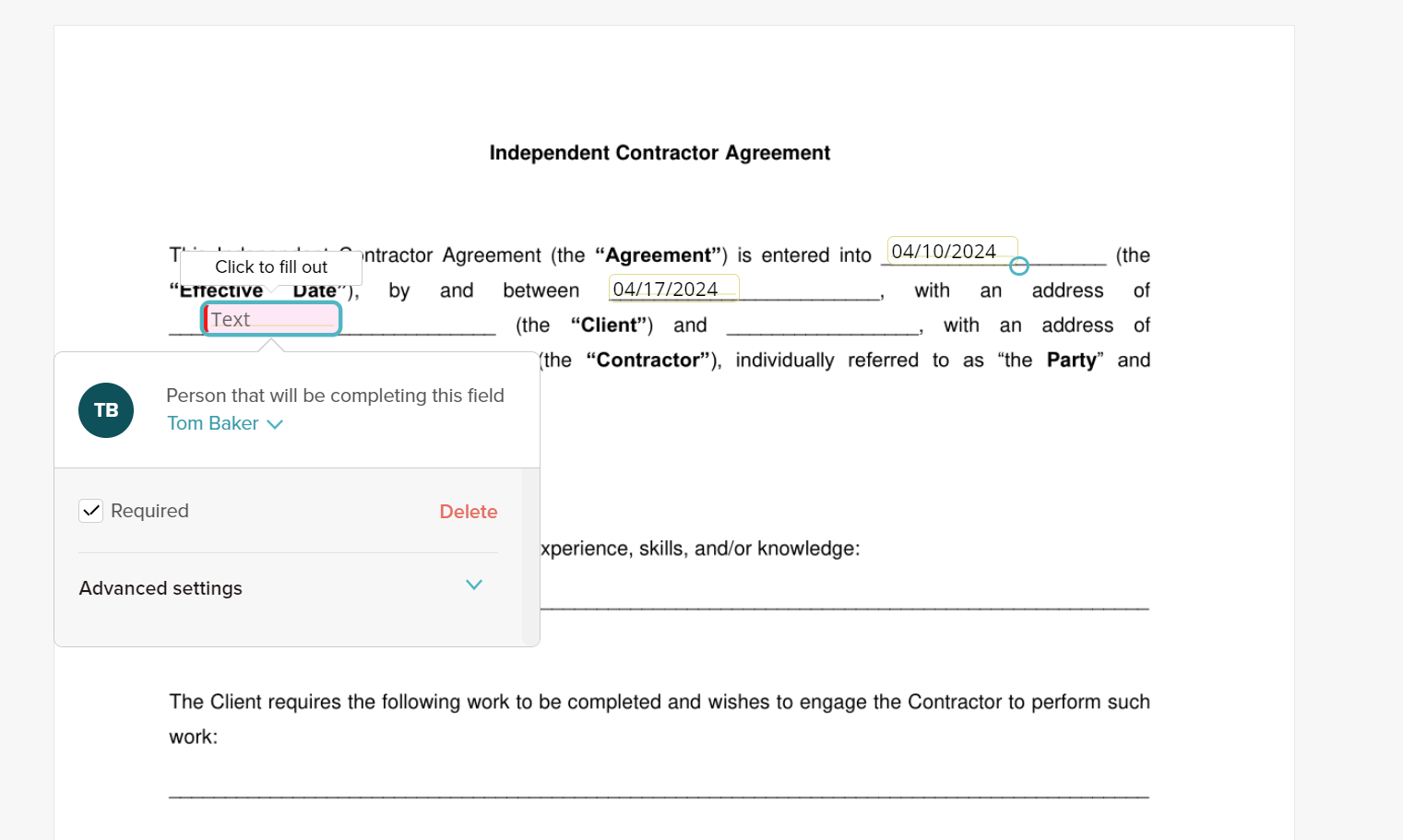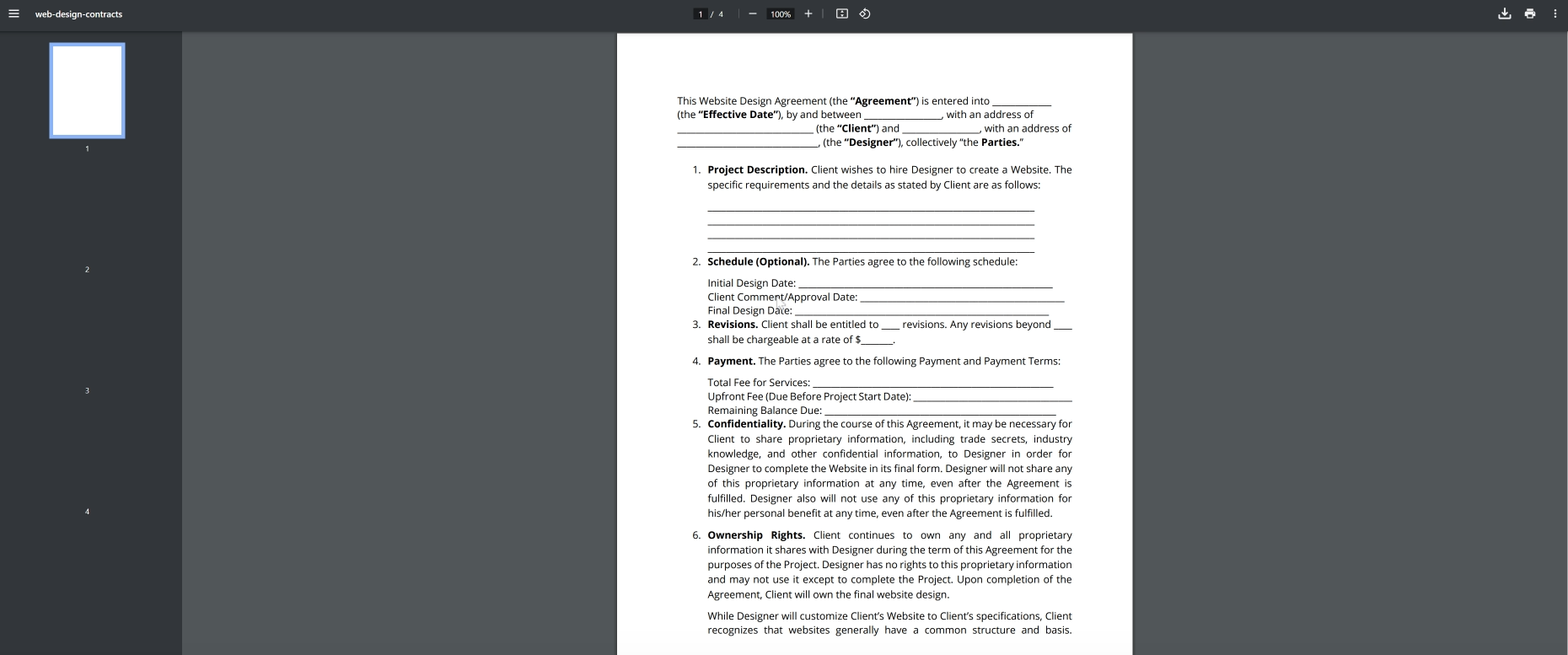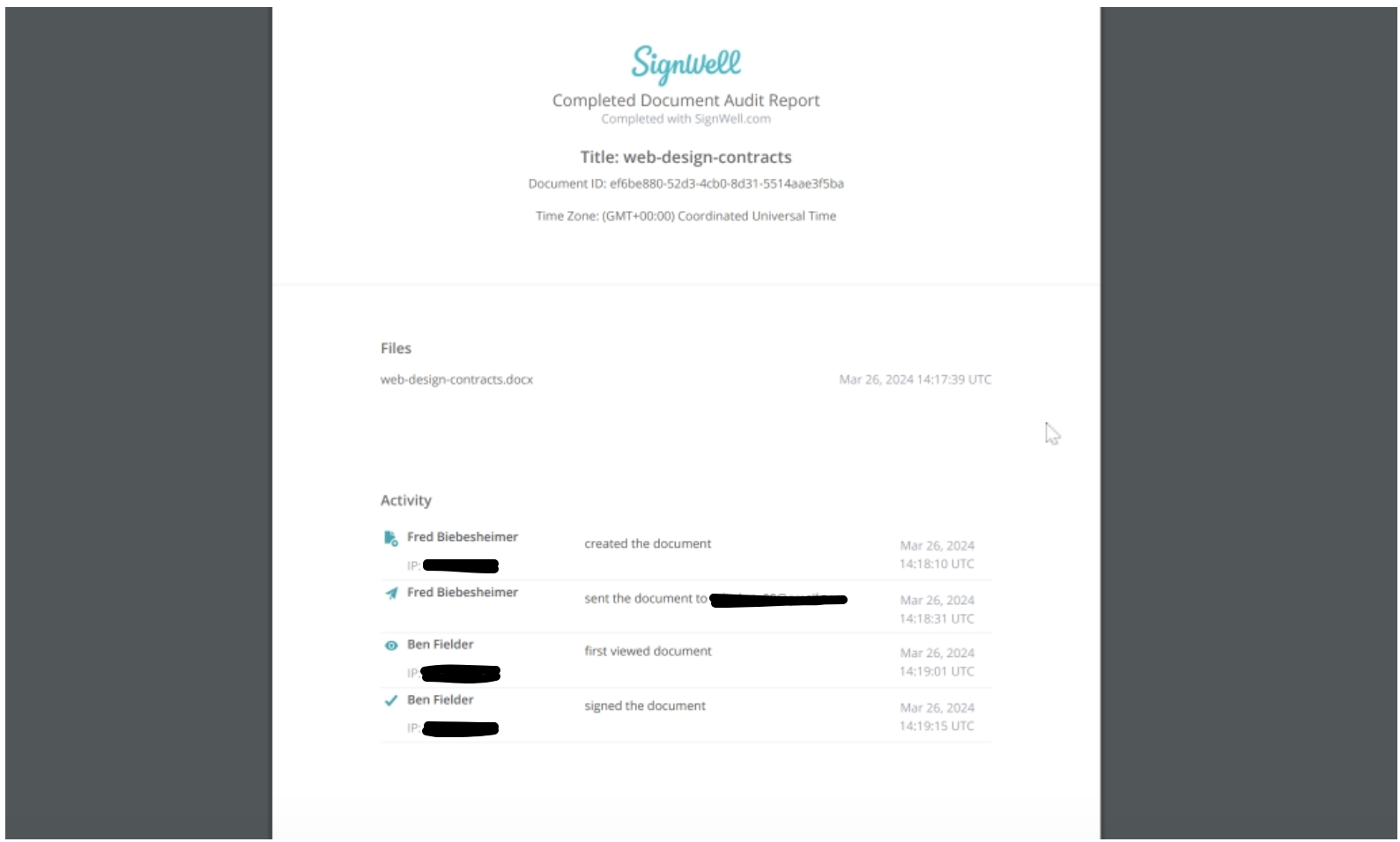Helpful Summary
- Overview: We explain everything you need to know about e-signature audit trails—from what they are to how you can use them, and even how to generate them using SignWell.
- Why trust us: We’ve helped over 61,000 businesses simplify and secure their e-signing processes with intuitive tools and comprehensive audit features.
- Why this is important: Electronic signature audit trails help you maintain compliance and keep documents secure.
- Action points: Find an e-signing tool like SignWell that supports comprehensive audit trails and learn when (and how) to use them.
- Further research: Check out the SignWell blog for insights into secure, compliant e-signing processes.
Exploring Electronic Signature Audit Trails
Electronic signatures have become a common way to sign documents online. However, remote signing comes with a few concerns—especially when verifying that signed documents are authentic, unaltered, and legally binding.
To address these concerns, e-signing tools have developed audit trail features. And in this guide, we’ll explain what an audit trail is and how it can help you maintain compliance and secure your documents.
Oh, and we’ll also explain how you can generate audit trails in minutes (for free) with SignWell.
But first…
What Is an Electronic Signature Audit Trail?
An electronic signature is a collection of digital data attached to an electronic document to confirm the identity and intent of a signer. A simple example is when you type your name in an online form to sign a document.

However, just seeing a signature on a document means very little. It doesn’t prove who actually signed the document, whether they signed an updated version of the document, who else accessed the document, or whether any changes were made after the document was signed.
Electronic signature audit trails help dispel these uncertainties.
Audit trails are activity logs that record each action taken on a document, from the creation of the signature to its finalization. The information included can vary, but here’s a selection of common data points:
- Activity (document creation, access, downloads, etc.)
- User information (name, email, IP address)
- Timestamps (date and time of each action)
- Document version history
- Any changes or modifications made to the document
The goal? To create a bulletproof record of the document’s journey, ensuring accountability and transparency for all parties involved. This not only provides a level of assurance for signers, but also serves as valuable evidence in case of any disputes or legal matters.
Benefits of Electronic Signature Audit Trails
Legal Compliance
The main benefit of e-signature audit trails is that they help you prove that an electronic signature is legally binding.
In contract disputes, the first (and arguably most fundamental) thing you need to demonstrate is that the agreement was signed by all parties involved. With an e-signature audit trail, you have a detailed record of all actions taken on the document, including who signed and when.
Plus, regulations like ESIGN (USA) and eIDAS (EU) require that you keep a record of electronic signatures for certain types of documents. Audit trails are a great way to satisfy these requirements and maintain compliance.
This is also important for industry-specific regulations like HIPAA.
Enhanced Security
On a similar note, e-signature audit trails provide enhanced security to your electronic documents.
Tracking each action taken on the document makes it easier to identify any unauthorized or fraudulent activity. This can help prevent tampering with important documents and protect against potential legal challenges.
Improved Accountability
Finally, audit trails can also improve accountability within your organization. With a detailed record of who has accessed and signed the document, it becomes clear who is responsible for any changes or decisions made. This can help prevent misunderstandings and ensure that tasks are completed accurately and efficiently.
5 Ways to Use Electronic Signature Audit Trails
There are all sorts of ways to use electronic signature audit trails in your business.
Here are five suggestions:
- Compliance and Regulatory Adherence: Part of maintaining compliance with e-signature laws means being able to prove that all necessary parties have reviewed and signed important documents. Using audit trails is a great way to demonstrate this.
- Fraud Prevention and Detection: Audit trails make it possible to track unauthorized access or modifications to signed documents, allowing organizations to identify and investigate potential fraud or misuse quickly. This includes fraud, identity theft, and other malicious activities.
- Process Optimization: By analyzing audit trail data, organizations can identify bottlenecks, optimize workflows, and improve the overall efficiency of their electronic signature processes. For example, let’s say you notice that a particular account manager is consistently taking longer than others to sign documents. You can use the audit report to investigate the stage causing the delay and adjust accordingly.
- Legal Evidence: In the event of a dispute, use your electronic signature audit trail as evidence to prove the validity and authenticity of signed documents. This can save your organization time and resources in legal proceedings (and may help you avoid them altogether).
- Security and Access Control: Audit trails enable organizations to closely monitor who has accessed and signed documents, allowing them to enforce granular access controls and quickly investigate suspicious activity. This enhances the overall security of the electronic signature system.
How to Generate Electronic Signature Audit Trails With SignWell
Every e-signing tool will have a slightly different process for generating audit trails (if they offer the functionality). With SignWell, the process happens to be incredibly simple—it’s automatically baked into our intuitive e-signing process.
Here’s how it works:
1. Create a Free SignWell Account (and Log In)
Start by heading over to the SignWell homepage and signing up for an account (if you haven’t already). Don’t worry—we offer a risk-free trial plan that allows you to send and sign up to 3 documents per month.

Once you’ve created your account, log in to the dashboard.
2. Create a New Document
Click the “New Document” button. Then, either select a template you want to use or upload a contract from your device.

Answer a few questions about who will be signing your document. Then, set up the document by dragging the following fields into the editor:

- Signature field
- Initials field
- Date field
- Text field
- Checkbox field
You can also add custom labels and data validation to customize the experience.
3. Set a Signing Order (Optional)
Next, you can set up a signing order for your document. This is useful if multiple signers need to sign in a specific order.

To set the signing order, simply drag the names of your desired signers into the designated order. You can also add new signers and CC non-signers if necessary. Everyone will get a copy of the finalized document once everyone has signed.
4. Send and Remind
When you’re all set, hit send and wait for the signatures to start rolling in. You won’t need to worry about reminding signers to sign as SignWell offers automatic reminders to keep the process moving smoothly.

You can view the status of pending and completed documents directly on the dashboard.
5. Download the Completed Contract
Once everyone has signed the document, the status will change to “Completed”. This means your audit report is ready to be accessed.

Click on the document dropdown menu and download the file.
5. Open the File
Once it’s done downloading, double-click on the file to open it. You’ll then be able to read through the completed document and see all the signatures in place.

6. Access the Audit Report
Within the document, you can scroll down to the final page to access the audit report.

There, you’ll find details on:
- Names
- IP addresses (for signers and viewers)
- Timestamps
- Activities (access, downloads, alterations, etc.)
7. Archive Audit Trail Data
Archive the electronic signature audit trail data securely for future reference and compliance purposes. Ensure that the audit trail data is stored in a tamper-evident format and is easily accessible for auditing, reporting, and legal purposes.
Conclusion
Electronic signature audit trails are an important aspect of document security. Learning to use them effectively can help protect your organization, ensure the validity of electronic signatures, and eliminate any debate over the authenticity of signed documents.
Looking for a tool that can help you easily manage and track your electronic signature audit trails?
SignWell is designed to offer intuitive e-signing without sacrificing security. With our digital audit trail, you can easily track all information associated with a document—including IP addresses, timestamps, and user identities.
Sign up for free and start signing documents today.
Sign with a team that knows what you need.
Putting a signature on a document shouldn’t be hard. The SignWell mission? Simplify how documents get signed for millions of people and businesses.
Get Started Todaybusinesses served, so far...
total documents signed
customer support satisfaction